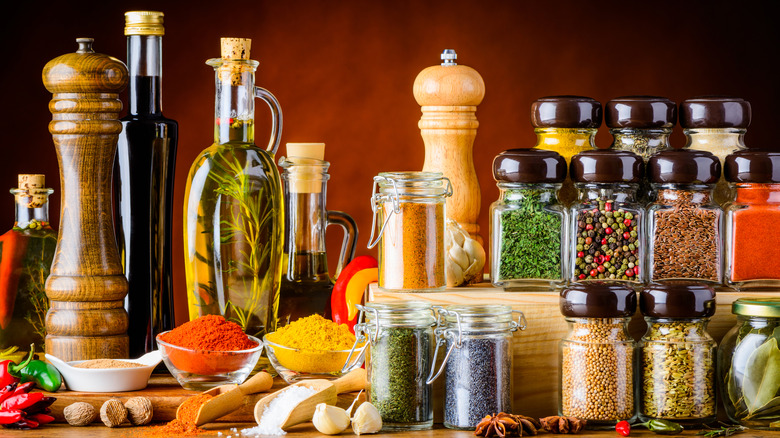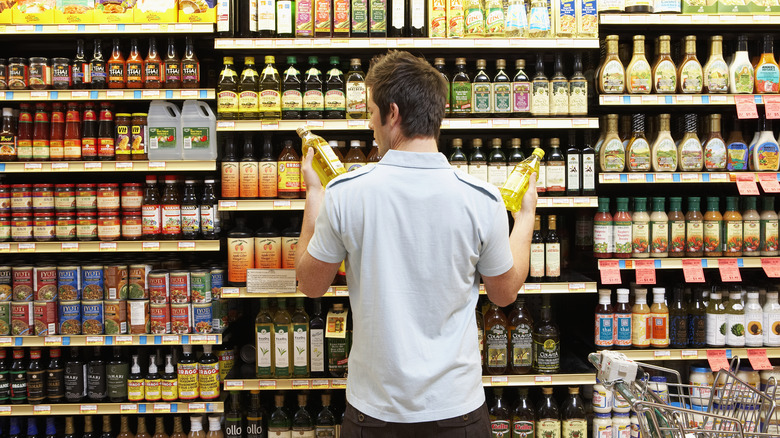What You Need To Know About The Shady Practice Of 'Food Fraud'
Upton Sinclair's "The Jungle" was published serially throughout 1905 in a magazine called "Appeal to Reason" before it became a full book, published in February 1906 (per History). Sinclair's novel, which exposed the corrupt failings of the meat-packing industry, was the catalyst for food regulations in the United States. By the summer of the same year, the Food and Drug Administration (FDA) had been formed and passed its first law of many, the 1906 Pure Food and Drugs Act. But well over a century later, fraudulent food practices remain prevalent in the United States, as well as globally.
In November 2021, the FDA released a new page on its website intended to educate consumers and businesses about food fraud (per Food Safety). Tthe organization defines Economically Motivated Adulteration (EMA), or food fraud, as the intentional act of leaving out, taking out, or substituting a part of a food or an ingredient of value.
But why is this still necessary today?
What does food fraud look like?
According to a 2016 press release from the Grocery Manufacturers Association (GMA), about 10% of food that consumers purchase is adulterated. The FDA reports that outside estimates of the global economic impact of food fraud range in the billions — potentially up to $40 billion annually, according to a January CNBC report.
A September 2020 report from FoodChain ID found that certain food products, including "herbs and spices (especially ground spices), alcoholic beverages, fish and seafood, certain meat products (especially if they are ground or processed), dairy products (in certain parts of the world), honey, and olive oil (especially extra virgin)," are more likely to fall prey to food fraud.
And while the adulteration of food may affect consumers' wallets, the overarching concern is food quality. Removing or replacing ingredients, as well as using misleading labels, can degrades products and result in serious illness. There are a number of instances, even in the last several decades, of food fraud that resulted in fatalities, per Ideagen. So, how can consumers remain safe?
How to avoid falling victim to food fraud
From fraudulent wine and misrepresented farm-to-table food origins to adulterated products on grocery store shelves, it can be a challenge for consumers to combat food fraud. However, there are a few ways that savvy shoppers can avoid being the victim of fraudulent practices.
The Food Fraud Prevention Think Tank, an organization dedicated to providing tools and education in the fight against food fraud, has created a brief list for consumers to consider when making purchases. The think tank suggests that consumers should always be especially careful of any product that "you put in you, on you, or plug into the wall." Second, the organization warns consumers to be educated about imposters by determining variations in quality. Being able to identify a high-quality version of a product versus a lower-quality one helps to reduce consumer vulnerability.
The think tank also suggests being knowledgeable about the supplier of the product, whether you're buying it in-person or online. It suggests consumers vet the legitimacy of the company before making purchases. Finally, the think tank says that complaining to a retailer or supplier when a food product is not legitimate is crucial to combating fraud. Similarly, the FDA encourages consumers to make reports and provides phone numbers for each state on its website.


